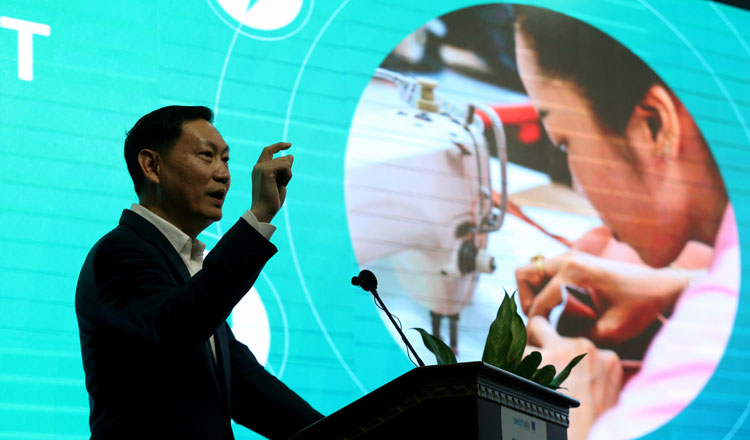
Solar power looking sunny in Cambodia
Around 372 megawatts (mW) of additional solar farmland will be put into operation in 2021, which makes up 9 percent of power in the country and 14 percent of the total installed capacity and peak demand respectively, according to data from Electricite du Cambodge (EdC).
EdC also added that another 60 mW of solar farmland will be put into operation in 2022 and a further 40 mW is undergoing a bidding process.
A megawatt is a unit for measuring power and represents 1 million watts which is equivalent to the energy produced by 10 automobile engines or used by 330 average homes for one hour.
“Approximately 200 mW more is being studied under our 2021-2023 simulation to test whether our grid can further support its injection into the system. This is critical because our national grid is also synchronised with those of neighbouring countries,” said EdC.
EdC Director-General Keo Rattanak said at the launch of the Switch Garment project last week that in the next few years the company aims to increase the share of solar energy in the mixture of power sources to at least 15 percent. Switch Garment is an initiative by the Garment Manufacturers Association of Cambodia to increase its use of sustainable energy.
“We are going to increase our solar energy alone by 200 mW in the next few years and, by 2030, approximately 1,815 mW of solar energy is expected to be added, representing 17 percent of peak demand,” Rattanak added.
“If you look the numbers in the rest of Asean, Thailand has 7 percent of solar energy and, if they added other new sources into the generation mixture, Thailand has 12 percent. Japan and South Korea have less than 5 percent and Malaysia has less than 5 percent of solar power,” he added.
Rattanak added that renewable energy includes solar, waste energy, wind, and biomass. “We are actively exploring the potential of energy such as types of biomass and wind energy – and hydropower is also being promoted,” he added.
According to the data from the EdC, the daily energy and capacity demand as of Sept 7 has consumption of energy at 34.14 million kW per day. Daily generation by hydro is more than 22.49 million kW (65.36 percent), coal is 5.74 million kW (16.70 percent), solar is 844,720 kW (2.45 percent), biomass is 15,335 kW (0.04 percent) and imported power is 5.316 million kW (15.45 percent).
EdC said that the capacity demand of energy during peak demand in the daytime is 1,812 mW and peak demand at night is 1,566 mW.
“Our plan is to keep increasing solar energy to the maximum level that can be supported by our grid without compromising the national grid’s stability. We believe that a fully responsible sustainable energy policy is one that treats all sectors in the economy equally and fairly and all costs to society are fully calculated and the cost evaluation is shared equally,” said Rattanak.
“We want clean and renewable energy but this energy has to make sense to the Cambodian people as a whole. No renewables will be added to the grid if they add costs to the consumers. With this in mind, we will continue to support all sorts of renewable energy that meet our criteria especially big scale solar farms that have good potential for better value for the Cambodian people,” Rattanak added.
Victor Jona, director-general of the Ministry of Mines and Energy’s General Department of Energy, said previously that the development of clean energy has provided more benefits to people and business that so far have not affected local communities.
“We have a lot of solar energy development in Cambodia, invested in by the private sector and the government has carefully studied the social impact to make sure that the project does not affect people and social environments,” he said.
There are five solar parks now being fast-tracked this year so they can be connected to the national grid as soon as possible, spread over Svay Rieng, Pursat, Kampong Speu, Battambang and Banteay Meanchey provinces.
These five projects are estimated to cumulatively boost the nation’s annual power supply by a total of 160 mW. The total amount of electricity available for the country last year was measured at 3,382 mW, up 28 percent from 2,635 mW in 2018.
Rattanak said the coal power plants that the government has approved will not drive down the percentage of renewable energy in the generation mixture, which is mainly solar and hydropower.
Source: https://www.khmertimeskh.com/50765104/solar-power-looking-sunny/
